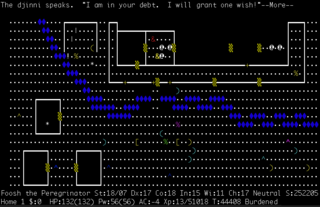
NetHack is an open source single-player roguelike video game, first released in 1987 and maintained by the NetHack DevTeam. The game is a fork of the 1982 game Hack, itself inspired by the 1980 game Rogue. The player takes the role of one of several pre-defined character classes to descend through multiple dungeon floors, fighting monsters and collecting treasure, to recover the "Amulet of Yendor" at the lowest floor and then escape.

Roguelike is a style of role-playing game traditionally characterized by a dungeon crawl through procedurally generated levels, turn-based gameplay, grid-based movement, and permanent death of the player character. Most roguelikes are based on a high fantasy narrative, reflecting their influence from tabletop role-playing games such as Dungeons & Dragons.
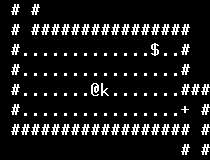
The Dungeons of Moria, usually referred to as simply Moria, is a computer game inspired by J. R. R. Tolkien's novel The Lord of the Rings. The objective of the game is to dive deep into the Mines of Moria and kill the Balrog. Moria, along with Hack (1984) and Larn (1986), is considered to be the first roguelike game, and the first to include a town level.
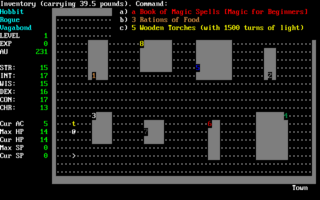
Angband is a dungeon-crawling roguelike video game derived from Umoria. It is based on the writings of J. R. R. Tolkien, in which Angband is the fortress of Morgoth. The current version of Angband is available for all major operating systems, including Unix, Windows, Mac OS X, and Android. It is identified as one of the "major roguelikes" by John Harris. Angband is free and open source game under the GNU GPLv2 or the angband license

In some role-playing games (RPGs), alignment is a categorization of the moral and ethical perspective of the player characters, non-player characters, monsters, and societies in the game. Not all role-playing games have such a system, and some narrativist role-players consider such a restriction on their characters' outlook on life to be overly constraining. However, some regard a concept of alignment to be essential to role-playing, since they regard role-playing as an exploration of the themes of good and evil. A basic distinction can be made between alignment typologies, based on one or more sets of systematic moral categories, and mechanics that either assign characters a degree of adherence to a single set of ethical characteristics or allow players to incorporate a wide range of motivations and personality characteristics into gameplay.
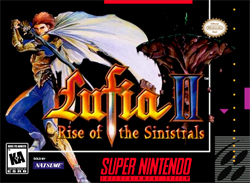
Lufia II: Rise of the Sinistrals, known as Estpolis Denki II in Japan, and as Lufia in Europe and Australia, is a role-playing video game with puzzle elements developed by Neverland and published in Japan in 1995 by Taito, and in North America and Europe in 1996 by Natsume and Nintendo respectively, for the Super Nintendo Entertainment System. It is the second game in the Lufia series.
In the Dungeons & Dragons (D&D) fantasy role-playing game, alignment is a categorization of the ethical and moral perspective of player characters, non-player characters, and creatures.
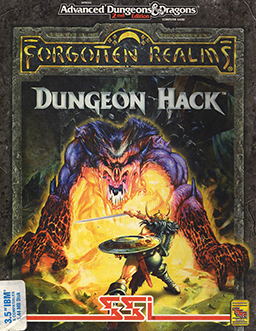
Dungeon Hack is a 1993 role-playing video game developed by DreamForge Intertainment and published by Strategic Simulations for DOS and NEC PC-9801.

Fatal Labyrinth, titled Shi no Meikyuu: Labyrinth of Death (死の迷宮) in Japan, is a role-playing video game developed and published by Sega. Originally available exclusively on the Sega Meganet multiplayer gaming service in 1990, it was later remade for the Sega Genesis in 1991. The game appears in Sonic's Ultimate Genesis Collection for Xbox 360 and PlayStation 3, and was later included in Sega Genesis Classics for PlayStation 4, Xbox One, and Nintendo Switch. The game was also released for Microsoft Windows on September 13, 2010. The game is similar to and shares assets with Dragon Crystal, which was also released around that time.

Ragnarok is a freeware Roguelike video game for MS-DOS, developed by Norsehelm Productions from 1992 to 1995.
Mystery Dungeon, known in Japan as Fushigi no Dungeon, is a series of roguelike role-playing video games. Most were developed by Chunsoft, now Spike Chunsoft since the merging in 2012, and select games were developed by other companies with Chunsoft's permission. The series began when co–creator of Dragon Quest, Koichi Nakamura, was inspired by Seiichiro Nagahata's experience with Rogue, who is also a fellow developer from the company, and a desire to create an original series. It began on the Super Famicom, progressing to almost all of Nintendo's and Sony's home and handheld consoles, WonderSwan, Dreamcast, Windows, and mobile devices.

Mystery Dungeon: Shiren the Wanderer, originally released in Japan as Fushigi no Dungeon 2: Fūrai no Shiren, is a roguelike video game developed and published by Chunsoft. It is the second entry in the Mystery Dungeon series, following 1993's Torneko no Daibōken. It was originally released for the Super Famicom in 1995 in Japan. Sega published a Nintendo DS remake in 2006 in Japan and in 2008 internationally. The remake was later ported to iOS and Android and published by Spike Chunsoft in 2019.
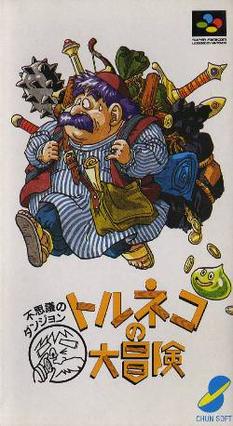
Torneko's Great Adventure: Mystery Dungeon is a 1993 role-playing video game by Chunsoft. The first entry in the Mystery Dungeon series, the game features Torneko, a merchant from Dragon Quest IV, and his adventures around the Mystery Dungeon in search of items.

Dungeon Crawl Stone Soup (DCSS) is a free and open source roguelike computer game and the community-developed successor to the 1997 roguelike game Linley's Dungeon Crawl, originally programmed by Linley Henzell. It has been identified as one of the "major roguelikes" by John Harris.
Elona is a single-player, roguelike game developed by Japanese developer Noa; it was released in August, 2007.
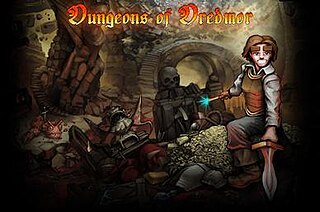
Dungeons of Dredmor is a roguelike indie video game released on July 13, 2011, by Gaslamp Games. A downloadable content (DLC) pack, "Realm of the Diggle Gods", was released later that year. A second DLC, "You Have To Name The Expansion Pack", was released on June 5, 2012, and a third, "Conquest of the Wizardlands", was released on August 1, 2012. The game has extensive support for user-created modifications.

Desktop Dungeons is a single-player roguelike-like puzzle video game developed and published by QCF Design. Released in November 2013, the game underwent a lengthy public beta phase, during which it was available to customers who pre-ordered the game. In the game, players navigate a dungeon filled with monsters before battling a final dungeon boss. The game has qualities of a puzzle as players must find the best methods to use items, spells, and upgrades to reach the final boss without losing too much of their character's health. Desktop Dungeons has been compared to a roguelike but with condensed gameplay. Desktop Dungeons received an award for Excellence in Design at the 2011 Independent Games Festival. The game is available for Windows, Mac, Linux, iOS, and Android. A video game remake titled Desktop Dungeons: Rewind was announced in 2022 and released April 18, 2023.
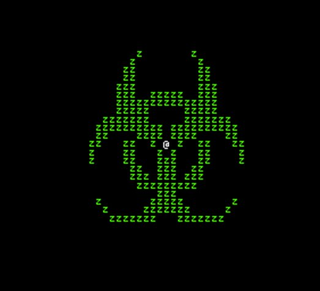
Cataclysm: Dark Days Ahead (CDDA) is an open-source survival horror roguelike video game. Cataclysm: Dark Days Ahead is a fork of the original game Cataclysm. The game is freely downloadable on the game's website and the source code is also freely available on the project's GitHub repository under the CC BY-SA Creative Commons license. The game is currently largely developed by its community. Rock, Paper, Shotgun named CDDA one of "The 50 Best Free Games on PC" in 2016.

Shiren the Wanderer is a video game series of roguelike and role-playing games developed by Spike Chunsoft. Unlike licensed crossovers within the Mystery Dungeon franchise, this series features original characters; including the eponymous rōnin protagonist Shiren and his traveling companion and talking weasel Koppa, with a plot and the location set generally in feudal Japan, and though indicative of the core games, which is navigating through a randomly generated dungeon using turn-based moves. As of March 2022, there have been multiple games across Nintendo and Sony platforms, mobile devices, Windows, and Steam, as well as few other medias released throughout the years.

Mistover is a 2019 roguelike dungeon crawler role-playing video game developed and published by Krafton for Microsoft Windows, Nintendo Switch, and PlayStation 4. Mistover is set in a ravaged world recovering from a mass invasion of monstrous creatures from another realm, and its storyline follows the journey of a party of adventuring heroes who are on a quest to discover the source of the invasion. Players navigate environments from an isometric perspective with a party of procedurally generated player characters drawn from a roster of eight character classes to fight monsters and acquire loot recovered from the exploration of levels. A phenomenon known as "mist" is prevalent throughout the game world and negatively influences its characters, monsters, and items.

















